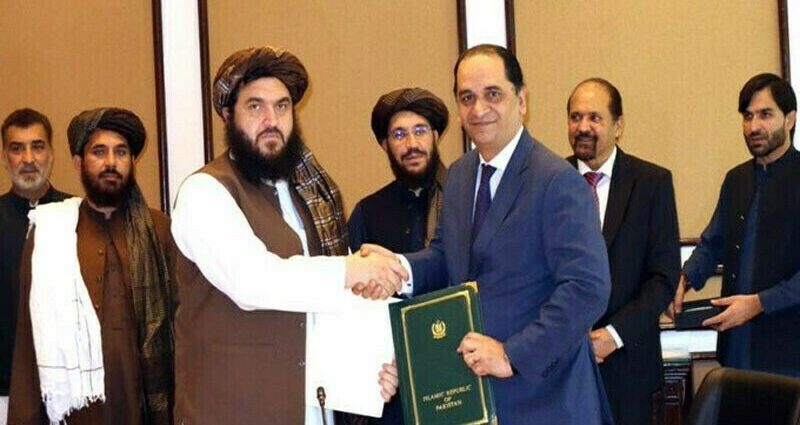Pakistan-Afghanistan Trade Agreement 2025
Under the deal, Pakistan will allow Afghan exports of tomatoes (400,000 tons at 22% duty), grapes, apples, and pomegranates (each at 27% duty). In return, Afghanistan will reduce duties on Pakistani exports of potatoes (400,000 tons at 22%), kinnows, bananas, and mangoes (27%). The tariff cuts are substantial—down from over 60%—and will remain in effect for a renewable one-year term. While the agreement may appear narrow in scope, it touches on a broader regional reality: in a time of contested borders and uncertain alliances, trade remains one of the few tools still capable of delivering shared value.
The timing of this agreement is telling. In the first half of 2025, trade turnover between the two neighbours reached $989 million, according to Afghanistan’s Ministry of Industry and Commerce. Pakistan accounted for $712 million of exports, mostly in rice, textiles, and pharmaceuticals, while Afghanistan’s $277 million in exports included cotton, dry fruits, and coal. These figures are notable, especially given the closure of the Ghulam Khan border crossing and ongoing frictions along the frontier.
What the PTA reflects is a shift in tone. The agreement follows a series of high-level meetings in Islamabad and Kabul, as well as the May 2025 trilateral dialogue in Beijing that saw China encouraging greater cooperation between Islamabad and the Taliban government. It also aligns with recent economic overtures like the July 17 signing of the Uzbekistan-Afghanistan-Pakistan Railway Framework Agreement in Kabul. Together, these developments point to a region beginning to pragmatically accept the political status quo in Afghanistan and recalibrate economic engagement accordingly.
For Pakistan, the deal is an attempt to leverage geoeconomics as a stabilisation tool. Border tensions, especially the uptick in Tehreek-e-Taliban Pakistan (TTP) attacks—over 1,300 reported in the first half of 2025—have strained ties. Islamabad has consistently accused the Afghan government of sheltering anti-Pakistan militants, a charge Kabul denies. Yet, despite this backdrop, both sides have opted to isolate trade from political grievance. The PTA is perhaps a rare example of mutual restraint—an agreement that could have easily been derailed but wasn’t.
Implementation remains the key variable. Past trade frameworks, including the Afghanistan-Pakistan Transit Trade Agreement (APTTA) of 2010, have struggled due to issues such as smuggling, banking guarantees, and non-tariff barriers. The PTA attempts to address some of these pitfalls. A dedicated Implementation Committee will oversee compliance, and Certificates of Origin will be managed by Pakistan’s Trade Development Authority and Afghanistan’s Ministry of Industry and Commerce. These are technical fixes, but necessary ones if trust is to be rebuilt.
There’s also a structural logic behind choosing agriculture for tariff liberalisation. These goods are time-sensitive, perishable, and critical for food security on both sides. By targeting these sectors, the PTA benefits farmers and traders alike, while supporting a baseline of economic resilience in otherwise fragile regions.
Still, the agreement operates in a complicated regional context. Pakistan’s relations with India remain tense following the April 2025 airspace closure and water treaty disputes. Meanwhile, Afghanistan’s growing proximity to India adds another layer of diplomatic calculation. In this environment, Islamabad’s economic diplomacy with Kabul can also be seen as a way to insulate trade ties from broader rivalries and reassert relevance in regional connectivity frameworks like the Belt and Road Initiative.
For businesses, the PTA opens new opportunities—especially in logistics, agri-trade, and cold chain infrastructure. But it also demands readiness: customs protocols must improve, cross-border facilities require upgrades, and traders on both sides will need to navigate new documentation and quality assurance requirements. Without parallel improvements in the physical and institutional architecture of trade, tariff cuts alone will not be enough.
Ultimately, the PTA is a cautious but constructive step forward. It demonstrates that even in an environment marred by violence, suspicion, and historical grievances, economic pragmatism can still prevail—at least temporarily. Whether this agreement becomes a template for broader regional cooperation or remains an isolated success will depend on how both governments manage the months ahead. But for now, it is a sign that trade—carefully negotiated and mutually beneficial—remains one of the few bridges still standing.

